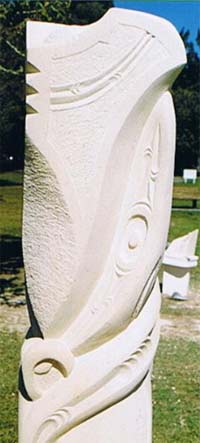Throughout most of history, the purpose of creating sculpture has been to produce works of art that are as permanent as is possible.
So to that end, works were usually produced in durable and frequently, expensive materials, primarily bronze and stone such as marble, limestone, Porphyry, and granite. More rarely, precious materials such as gold silver, jade, and ivory were used for chryselephantine works. More common and less expensive materials were used for sculpture for wider consumption, including woods such as oak, Buxusbox and Tilialime, terra cotta and other ceramics, and cast metals such as pewter and spelter.
Māori carving or whakairo has developed over centuries. The most common mediums worked are wood, pounamu (nephrite jade), human flesh (Tāmoko or tattooing), animal and human bone and onewa (basalt).
Sculptors are constantly searching for new ways to make art and for new materials to use. James Webster is actively applying his studies in these areas.
